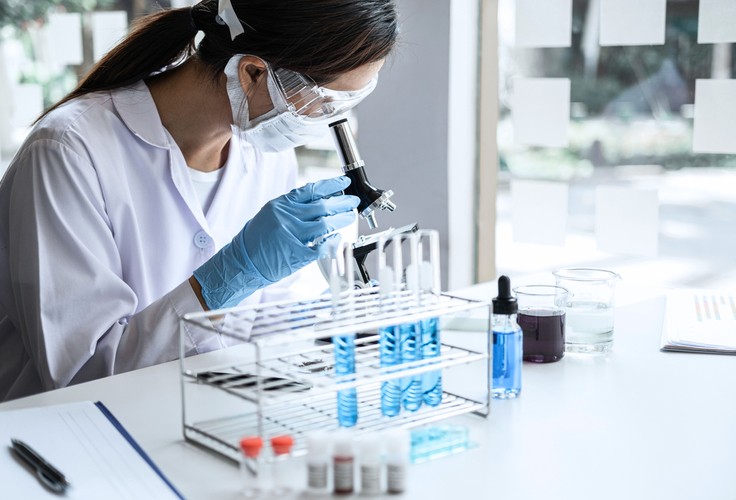
In a laboratory setting, contamination can wreak havoc in nearly every aspect of the operation — resulting in shutdown, cleaning, testing time, risk to personnel, skewed lab results, unusable product and much more. In light of the safety threats, lost time, risk to lab work and test results — and excess operational costs required to address these disruptions — it is clearly critical to know how to avoid contamination in lab settings.
When we think of contamination in a lab, we are usually referring to cross contamination: The unintended transfer of microbes or other unwanted material from one thing to another. Cross contamination normally refers to the migration of a contagion or impurity from one sample to another. This cross contamination can happen from touching one sample and then the other, or touching a sample, then touching equipment without cleaning gloves, followed by another person touching that equipment in the same place and touching their sample before decontaminating their gloves. There are MANY other examples of how cross contamination can occur.
The primary types of lab contamination are biological and chemical, and the risks and tactics that we will discuss throughout the rest of this piece apply to both categories. What is at risk of being contaminated by biological material such as bacteria, fungi and spores, or chemical materials such as cleaning agents?
Areas include:
- The lab environment
- Cell cultures
- Testing chemicals
- Sample media
- Reagents
- Personnel and PPE
Why Is It Important to Prevent Contamination?
Contamination in a lab can present numerous hazards while also sidetracking facility operations. Risks and potential consequences of contamination include:
- Extended downtime: When a contamination event occurs, a multistep protocol must be followed to assess the impact of the contamination, achieve safety, contain the issue, and restore the facility or setting to proper working order. The first step in this protocol will often be a shutdown of the facility or work area, which cannot be reactivated until all steps are complete and the cleanliness and facility of the area have been restored. Throughout every step of this process, most work cannot be completed, resulting in delays and lost resource time building by the minute.
- Unplanned cleaning and testing: While lab facilities are subject to rigorous, regular cleaning and testing protocols, a contamination event requires more, unplanned processes to contain the problem and return to compliance. These unplanned processes add time and cost to facility operations.
- Invalidated results: When contamination occurs, any lab samples in process or in the area will almost always be invalidated due to the loss of the controlled, repeatable environment.
- Rework: Following from the above point, invalidated results mean that identical work must be completed again to be acceptable.
- Worker safety: Contamination presents a risk to workers who may be exposed to toxic biological or chemical agents that can harm them, make them ill and pose a risk of contagious spread.
- Certifications and compliance: The inability to maintain a contamination-free environment could put facility certifications and compliance tests at risk, threatening the lab’s ongoing existence.
- Reputational damage: In addition to official certification risk, facilities with a reputation for poor contamination management become undesirable places to work or do business.
Preventing Contamination
Now that you understand the risks of facility contamination, we will look at how to avoid cross contamination of chemicals in a lab, as well as averting biological cross contamination.
Proper practices include:
- Developing and following rigorous safety processes: Safety and cleaning processes should be developed according to documentation and best practices. They should occur at the right times — when vacating or entering a facility, after an incident occurs, and prior to and after maintenance, to name a few. These are all in addition to standard cleaning and safety steps that should be part of day-to-day tasks for workers.
- Testing regularly: Ongoing contamination testing should occur to better ensure that any irregularities are detected as soon as possible. A higher frequency of testing adds safety barriers to possible loss, where instead of losing a year of product/research, maybe only 6 months is under question.
- Creating a culture of safety and prevention: Safety practices should be viewed as a point of pride for personnel, not treated as a prescribed necessity. Be sure to train and retrain employees, confirm that documentation and processes are readily available for review, and celebrate milestones without contamination incidents.
- Using the right cleaners and methods: There are numerous decontamination methods and practices, depending on the application and materials in use: surface disinfecting, sterilization, fogging and more. Verify that you are using the correct methods for your scenario.
Technical Safety Services offers a range of testing services, including many designed to help prevent contamination in a lab. For more information, contact us today.

